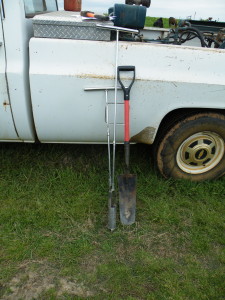Grassy weeds can be a major obstacle in bermudagrass systems, reducing forage quality, competing for nutrients and water, and interfering with harvest operations. Effective control requires a strategic approach that considers weed biology, forage growth stages, and herbicide options.
Common Grassy Weeds in Bermudagrass Systems
Some problematic grassy weeds include:
- Crabgrass (Digitaria spp.)
- Johnsongrass (Sorghum halepense)
- Goosegrass (Eleusine indica)
- Barnyardgrass (Echinochloa crus-galli)
- Fall panicum (Panicum dichotomiflorum)
These species often thrive in disturbed areas, thin stands, or under poor fertility and moisture conditions.
Integrated Control Strategies
1. Maintain a Dense Bermudagrass Stand
- Healthy bermudagrass competes well with weeds.
- Ensure proper fertilization to promote vigorous growth.
- Avoid overgrazing that weakens the stand.
2. Timely Mowing and Grazing
- Mowing can suppress annual grassy weeds before seed set.
- Rotational grazing helps maintain forage density and reduces weed pressure.
3. Herbicide Options
- Pre-emergent herbicides like indaziflam, pendimethalin or diuron (newly sprigged bermudagrass only) can prevent annual grassy weed germination.
- Post-emergent herbicides such as glyphosate (spot treatment), quinclorac, or nicosulfuron may be used selectively depending on the weed species and bermudagrass tolerance.
- Always follow label directions and consider application timing to avoid injury to bermudagrass.
4. Renovation and Reseeding
- Severely infested areas may require renovation.
- Use bermudagrass sprigs or seed and apply pre-emergent herbicides after establishment.
Fertility and Weed Competition
Grassy weeds often thrive in low-fertility soils. Conduct soil testing and apply nutrients based on forage needs. Balanced fertility not only boosts bermudagrass growth but also reduces weed competitiveness.
Monitoring and Follow-Up
Regular scouting is essential. Identify weeds early and adjust control measures as needed. Keep records of herbicide applications, grazing rotations, and weed emergence patterns.
Conclusion
Controlling grassy weeds in bermudagrass pastures and hay meadows requires a combination of cultural practices, timely herbicide use, and proactive fertility management. With an integrated approach, producers can maintain high-quality forage stands and reduce weed-related losses.
Vanessa Corriher-Olson, Ph.D
Professor, Forage Extension Specialist
Soil & Crop Sciences
Overton, TX
Texas A&M AgriLife Extension Service
Texas A&M University System

